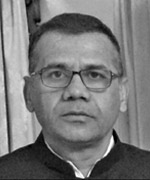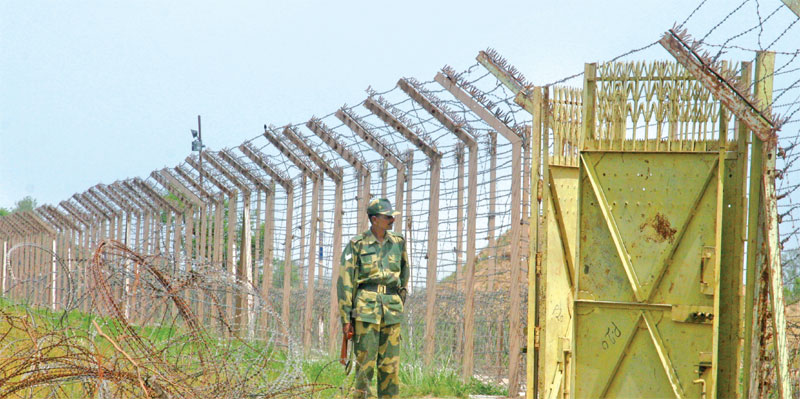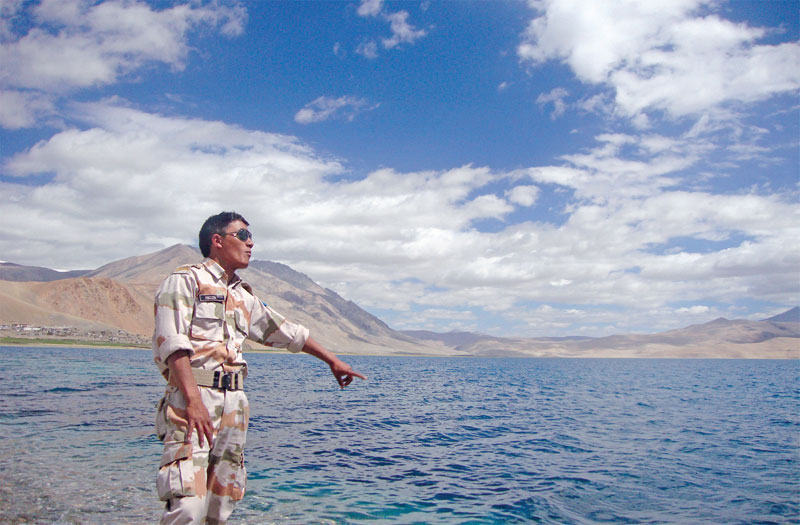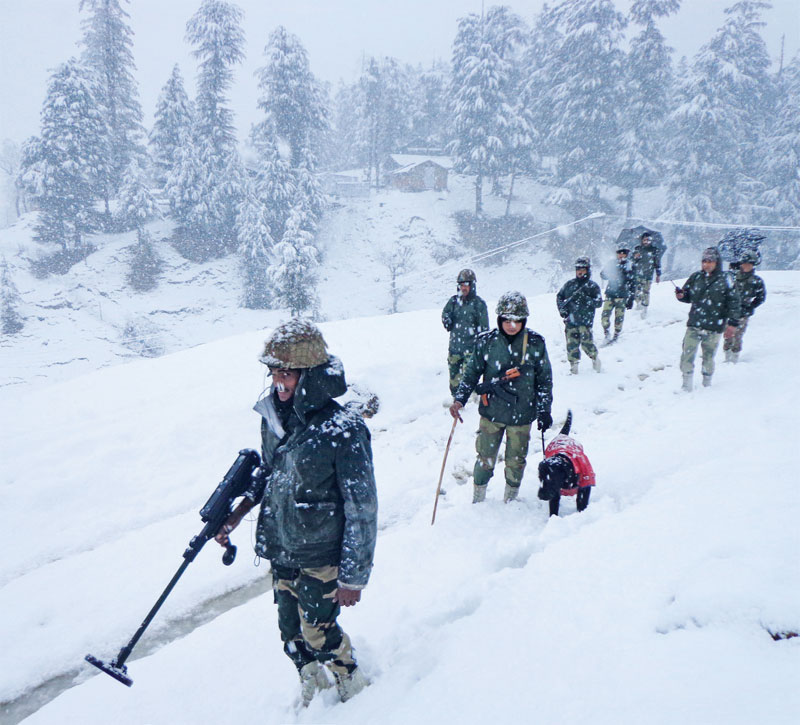Both military and border guarding forces should be taken out of internal security duties
 R.C. Sharma
R.C. Sharma
In an unstarred question on December 7, 2022, Rajya Sabha member from the Bharat Rashtra Samithi, K.R. Suresh Reddy, asked the ministry of home affairs (MHA) whether the government agreed that there should be a comprehensive review of India’s counterinsurgency strategy. More specifically, he wanted to know if the Central Reserve Police Force should be restructured so that the armed forces are free to perform their primary function.
Minister of state for home affairs Nityanand Rai replied that the police and public order were state subjects under the Seventh Schedule of the Constitution and the primary responsibility of maintaining law and order rested with state governments. He further said that the central government, through the deployment of central armed police forces (CAPFs) and various other measures, was committed to help state governments. He said the strengthening of the CAPFs through training and other measures was a continuous process.

The question Reddy posed calls for an urgent need to carry out a review of the national security strategy and initiate restructuring of the security forces at the macro and micro levels. A national security analysis needs to be undertaken regularly so that the security apparatus keeps pace with emerging security challenges and geo-strategic environment. But unfortunately, India does not have a documented national security doctrine for external and internal threats.
India’s national security apparatus can be broadly categorised into two domains: external and internal. Both domains fall under separate constitutional authorities. While the defence of India falls under the union list and is the preserve of the armed forces, public order falls under the state list and is a police domain. But over a period, our national security structure has changed, and internal security has moved beyond the police domain because of its inability to handle the challenges. This may be due to fact that the police leadership lacks long-term vision and appreciation of emerging internal security challenges. They could not appreciate that in new security dynamics, the lines between external and internal security are blurred, rendering state governments and the police as marginal players in the maintenance of internal security. The armed forces and the CAPFs have now assumed a major role. Their continued involvement in internal security duties has adversely affected their primary role.
Security Compromised
Despite the existence of the National Security Council Secretariat (NSCS), different security organisations lack coordination and work at cross purposes, affecting inter-organisational harmony. India is grappling with an unconventional warfare unleashed by its adversaries. This requires synergy among the security forces but instead there is an internecine struggle for organisational primacy. There is an urgent need to take corrective steps through reforms and restructuring.
Different security establishments were raised from time to time to meet the external and internal security challenges. Initially, the task of guarding the borders fell on state armed police battalions. But they were found wanting in terms of weaponry, equipment, training, cooperation and coordination with the army during war. The need for separate professional organisations for border guarding was felt, relieving the army for its primary role. As a result, the Indo-Tibetan Border Police (ITBP) was raised after India-China war of 1962, the Border Security Force (BSF) after the Indo-Pakistan war of 1965 and the Sashastra Seema Bal after the Kargil conflict in 1999. These raisings were incidental and situational. The idea was to ensure effective border management and assist the army during war. No secondary functions were thought of at that time. But today such duties have overshadowed the primary functions of these security organisations.
The Kargil Review Committee (KRC) in chapter V on border management says, ‘Border guarding forces need to be distinguished from central police organisations, present day equivalent of Central Armed Police Organisations (CAPFs). Being more akin to army and different from central police organisations which are called in aid of civil power from time to time, they need to be appropriately strengthened both in terms of equipment and manpower.’ It further says: ‘The repeated withdrawal in large numbers of paramilitary forces from border guarding duties for internal security and counter insurgency duties has led to neglect of borders. These forces have also been unable to perform optimally due to cannibalisation of battalions and even companies. Lack of institutionalised arrangements for sharing and coordination of intelligence at various levels and particularly at field level, is a primary weakness in proper management of borders. The present tendency on the part of each agency to guard its turf, even at the cost of compromising national security, needs to be deprecated and put down sternly.’ But today, the army and border guarding forces have become an integral part of the internal security structure, affecting and degrading their professional capabilities.
Urgent reforms and restructuring are needed in the external and internal security apparatus in the national interest. An external security restructuring is required to overcome the shortcomings noticed during the India-China clashes of 2020. A lack of coordination was felt between the army and the ITBP and at highest levels of the government. The ministry of defence (MoD) could not get the ITBP under the operational control of the army despite an urgent requirement. Writing in The Print, Lt Gen. H.S. Panag (retd) said: ‘At present with respect to the unsettled India-China border, the armed forces and the ITBP function in virtual silos under the MoD and the MHA.’ Therefore, it is imperative that the external and internal security apparatus is reformed to suit the need of national security.

External Apparatus
During war the nation functions as one entity. All state organs integrate to supplement the war effort. The military fights the war while the border guarding forces have a stipulated wartime role, which they execute under the army’s operational control.
However, peacetime aberrations make war fighting difficult due to near non-existence of peacetime war training of the border guarding forces. Therefore, integration of the border guarding forces with the army is necessary.
But before considering organisational/structural reforms for integration, there is a need to analyse the peace and war time roles of the border guarding forces to arrive at a reforms agenda. In his book BSF: The eyes and ears of India, S K Sood, a retired BSF additional director general, outlined the force’s peace time role as:
- Promote a sense of security among the people living in border areas.
- Prevent trans-border crimes, unauthorised entry into and exit from the territory of India.
- Prevent smuggling and any other illegal activities.
Considering that border management and war fighting have been diluted at the altar of internal security, there is an urgent need to restructure the border guarding apparatus. An objective analysis makes it clear that the role and task of the border guarding forces are akin to the army’s infantry. They need to train and function like the infantry for effective role execution. They need restructuring on an infantry pattern in terms of weapons, strength, equipment and training. The first step is to make the border guarding forces an integral part of the national security apparatus. For the purpose, they need to be restructured and placed under the command of the army while maintaining their separate unique identity.
Under Army
There is no wartime training of the border guarding forces because of unmanageable secondary functions resulting in dilution of their professionalism and operational performance. Unfortunately, military also has not been able to impress upon the government and the border-guarding forces of the dire need for continuous coordinated professional training. What is the solution for this Himalayan neglect? How do we ensure an effective coordinated border management and wartime training which integrates the border guarding forces and the army. For effective coordination and integration, the following restructuring of the national security apparatus is recommended.
- Place the border guarding forces permanently under the MoD.
- Establish a directorate of border guarding under the army HQ/HQ integrated defence staff which will have the border-guarding forces under its operational and administrative control. These forces maintain their separate identity and uniform with pay structure and benefits as applicable to the regular army.
- Earmark a budget for border guarding, logistics planning, procurement and administration of the border guarding forces under the directorate of border guarding.
- Maintain their integral cadre structure to maintain their unique identity. Have a promotional structure on the pattern of the army for all ranks. There should be no inter-organisational movement at the officer level. However, a common cadre can be considered for the border guarding forces.
The new system, if adopted, will help in making national security more effective and certainly help the nation take on adversaries more resolutely with the have following advantages:
- A single point command structure eliminating multiple command points.
- Better logistic management with uniformity.
- Combined coordinated training enhancing professionalism with reduced administrative costs.
- A common arms, ammunition and equipment pool that enhances capability.
- Border guarding forces automatically become part of theatre assets.
- Border guarding forces become an integral part of the armed forces with cadre officers managing command positions.
- Reorganisation of battalions can be carried out on infantry pattern.
- Feeder services for the Agnipath scheme.
- Each border guarding force can take 25 per cent of Agniveers, thus it will have a trained manpower.

Internal Apparatus
According to the MHA’s annual report of 2020-2021, internal security is categorised as ‘terrorism in the hinterland of the country, Left Wing Extremism (LWE) in certain areas, insurgency in the north-eastern states and cross-border terrorism in Jammu & Kashmir.’
The report says, ‘The principal focus on the internal security front remained on countering terrorism in Jammu and Kashmir, improving the security scenario in the North Eastern States, combating Left Wing Extremism and maintaining peace in the hinterland of the country.’ The annual report realistically accepts that a large geographical area of the country is faced with internal security challenges of terrorism, LWE and insurgency which are beyond the control of the first responders, that is the state police. The ministry claims that capacity building of the states’ police forces is through regular training in the area of intelligence collection, response to terror incidents and investigation. But they are not sufficient to tide over the internal security challenges of terrorism, LWE and insurgency.
What is the solution to the internal security problems? How can the internal security challenges be met without involving the army and the border guarding forces? The solution lies in restructuring the internal security apparatus to include restructuring of the state police and CAPFs responsible for internal security.
In current internal security scenario, the Union government deploys the BSF, SSB, ITBP, Central Reserve Police Force (CRPF), Central Industrial Security Force (CISF) and the National Security Guard (NSG). The state police neither has the professional acumen nor the leadership and capability to tackle internal security challenges. Border guards are diverted from their primary role, diluting border management. The internal security CAPFS such as the CRPF, CISF and the NSG need to be restructured so that there is no need to deploy the army, or the border guarding forces to tackle internal security challenges.
The first major step in this direction should be to establish an integrated internal security headquarter headed by a senior police/ CAPF officer who will be single point advisor to the home minister on internal security matters. He may be designated Director General (Internal Security). His headquarter will have different directorates such as a counter insurgency and counter terrorism directorate, special police forces directorate, natural disaster directorate, modernisation & training directorate, planning and procurement directorate to be headed by an integral cadre officer from the CAPFs. This will lead to an integration of professional capabilities and assets for tackling internal security challenges successfully.
The different internal security CAPF heads should report to him and coordinate the deployment of assets for internal security duties based on a professional analysis of the situation. Similarly, the head of internal security should coordinate logistic management, training, modernisation and common utilisation of facilities for professional development of the forces. Physical deployment and administration, including human resource management, should be the responsibility of different force heads. The system will be a step towards better professional management of these forces where primacy is given to cadre officers.
The next step should be to trim the structure of internal security CAPF battalions for better response. The state armed police forces need to be better utilised and for this a major restructuring needs to be initiated by the MHA in consultation with the state governments. These forces are poorly equipped, trained and led. They need restructuring on the pattern of the CAPFs and they should be commanded by officers of the border guarding forces and the CAPFs. They need to be effective first responders to any serious law and order situation.

